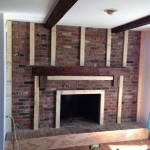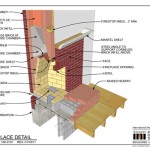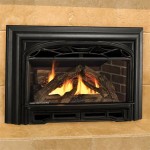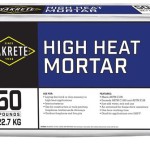Selecting and Applying Paint for Fireplace Surfaces
Painting a fireplace can dramatically transform a living space, offering a fresh aesthetic and breathing new life into a focal point of the room. However, successfully painting a fireplace requires careful consideration of the materials involved, the type of fireplace, and the proper preparation techniques. Using the wrong paint or neglecting crucial preparatory steps can lead to peeling, cracking, discoloration, and even fire hazards. This article details the essential aspects of selecting and applying paint specifically formulated for fireplace surfaces.
The type of fireplace being painted is the primary factor in determining the appropriate paint. Fireplaces generally fall into three categories: brick, stone, and mantel. Each material presents unique challenges and requires specific paint formulations. Brick, for instance, is porous and absorbent, requiring a paint that can seal the surface without trapping moisture. Stone can vary widely in texture and composition, requiring a careful assessment of its compatibility with different types of paint. Finally, a mantel, typically made of wood, presents different challenges again, requiring paint that adheres well to wood and can withstand moderate heat.
Understanding Heat-Resistant Paint Formulations
The selection of heat-resistant paint is paramount for any fireplace painting project. Standard interior paints are not formulated to withstand the high temperatures generated by a working fireplace, often leading to blistering, peeling, and the release of harmful fumes. High-temperature paints, also known as stove paints or fireplace paints, are specifically designed to tolerate temperatures ranging from 200°F to 1200°F or even higher, depending on the formulation. These paints are typically made with acrylic latex or silicone resins combined with heat-resistant pigments.
For the firebox itself – the interior of the fireplace where the fire burns – a specialized high-temperature paint is mandatory. This paint must be able to endure direct flame exposure and extreme heat. Stove paints are available in aerosol cans or liquid form, and their application usually requires priming the surface with a compatible high-temperature primer. The specific heat resistance rating of the paint should be carefully reviewed to ensure it exceeds the maximum temperature expected within the firebox.
For the exterior surfaces of the fireplace, such as the brick or stone surround, a slightly less heat-resistant paint may be sufficient, depending on the proximity to the firebox. Heat-resistant acrylic latex paints are often a suitable choice for these areas, providing good adhesion, durability, and ease of application. These paints are available in various colors and finishes, allowing for greater aesthetic flexibility.
Preparing Fireplace Surfaces for Painting
Proper surface preparation is critical for ensuring the paint adheres correctly and provides a long-lasting finish. The preparation process varies depending on the material being painted, but some general steps apply to all fireplace types. First, the fireplace should be thoroughly cleaned to remove any soot, dust, dirt, or grease. A wire brush can be used to scrub away loose debris and stubborn stains. A solution of trisodium phosphate (TSP) or a similar degreasing cleaner can be used to remove oily residues. After cleaning, the surface should be rinsed thoroughly with water and allowed to dry completely.
For brick fireplaces, any cracks or crumbling mortar should be repaired before painting. A masonry crack filler or patching compound can be used to fill in gaps and create a smooth, even surface. Once the filler has dried, it should be sanded smooth to blend seamlessly with the surrounding brick. If the brick surface is particularly porous, a masonry primer should be applied to seal the surface and improve paint adhesion.
For stone fireplaces, the surface preparation process is similar to that of brick fireplaces. However, it is essential to carefully inspect the stone for any signs of loose or flaking material. Loose stones should be re-mortared, and any surface imperfections should be addressed with a suitable patching compound. As with brick, a masonry primer is recommended to ensure optimal paint adhesion.
For wooden mantels, the preparation process involves sanding the surface to create a smooth, even finish. Any existing paint or varnish should be removed with a paint stripper or orbital sander. Once the surface is smooth, it should be primed with a wood primer to seal the grain and improve paint adhesion. It is crucial to select a primer that is compatible with the chosen paint to avoid compatibility issues.
Applying Paint and Ensuring a Durable Finish
Once the fireplace surface has been properly prepared, the paint can be applied. It is essential to use high-quality brushes or rollers specifically designed for the type of paint being used. For detailed areas and tight spaces, a smaller brush is recommended. For larger, flat surfaces, a roller can provide a smoother, more even finish.
Two or more thin coats of paint are generally preferable to one thick coat. Thin coats allow the paint to dry properly and prevent runs or drips. Each coat should be allowed to dry completely before applying the next. The drying time will vary depending on the type of paint and the ambient temperature and humidity.
When painting a fireplace, it is important to pay attention to the edges and corners. These areas are often prone to drips and uneven coverage. A small brush can be used to carefully apply paint to these areas, ensuring a clean and professional finish. Masking tape can also be used to protect adjacent surfaces from paint splatters.
After the final coat of paint has dried, the masking tape can be removed. The fireplace should be allowed to cure for several days before being used. Curing allows the paint to fully harden and develop its maximum heat resistance. Consult the manufacturer's instructions for specific curing recommendations.
Regular cleaning and maintenance can help to prolong the life of the painted fireplace surface. Soot and dust should be removed regularly with a soft brush or vacuum cleaner. Minor scratches or chips can be touched up with a small amount of paint. By following these guidelines, a fireplace can be successfully painted, creating a beautiful and durable focal point in any room.

How To Paint A Fireplace Interior Design Diy Tips Direct Fireplaces

Stonelux Fireplace Paint Stone Coating Effect

How To Paint A Fireplace Graham Brown

30 Gorgeous Painted Brick Fireplace Ideas

How To Paint A Brick Fireplace Young House Love

See How I Made Over An Ugly Clunky Stone Veneer Fireplace With Paint

How To Update A Brick Fireplace With Chalk Paint Diy Beautify Creating Beauty At Home

How To Spray Paint The Fireplace Surround My Homier Home

How To Paint Your Fireplace Brick Surround

How To Paint A Brick Fireplace What Use Home With Janny








